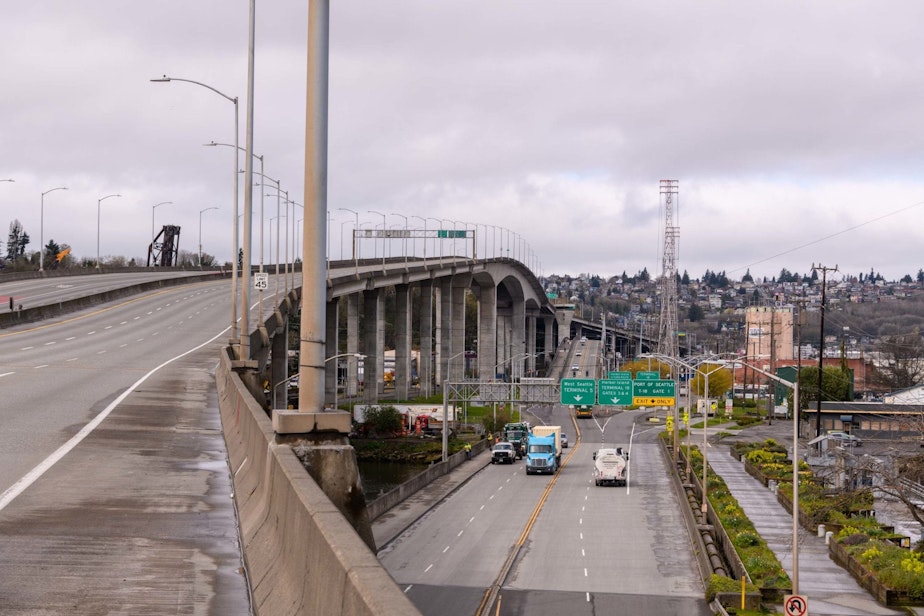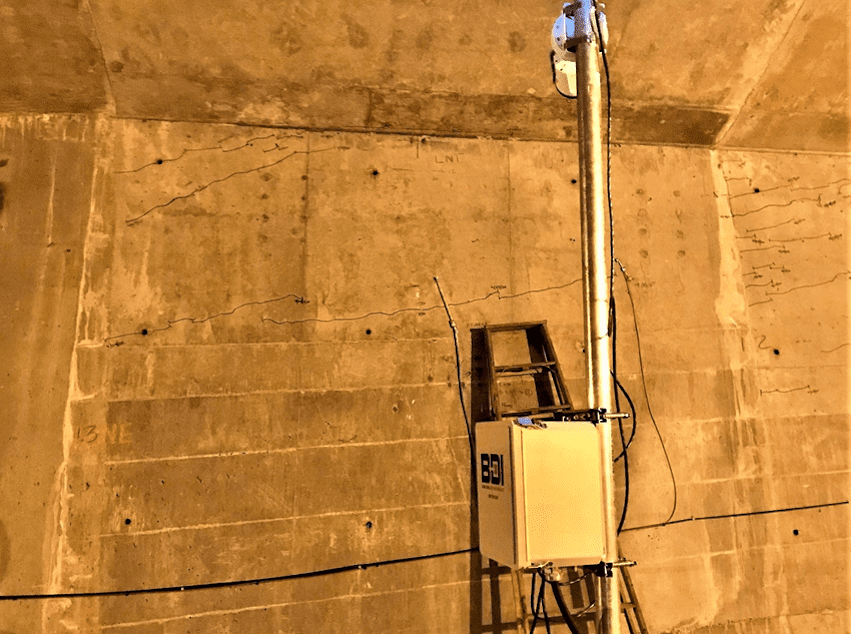Another West Seattle bridge in trouble

Now there’s a second West Seattle Bridge with serious cracks in it.
The Spokane Street Swing Bridge—the low-rise bridge that sits in the shadow of the badly cracked high-rise bridge—is also in need of major repairs.
The low bridge is the only direct link for drivers and bus riders between West Seattle and downtown, now that its towering neighbor is closed for years of repairs and possible demolition.
Seattle Department of Transportation spokeperson Michael Harold said the low bridge’s cracks in four locations can be repaired with carbon-fiber wrap and other measures.
“We do not see crack growth,” Harold said. “At this moment in time, it is not deep cracking, and it is not even remotely analogous to the situation happening on the high-rise bridge.”
Even so, to reduce wear and tear on the structure, the city is lowering the speed limit on the low bridge from 30 to 25 miles per hour, with flashing speed-tracking signs, and restricting the heaviest of overweight trucks from using it.
Sponsored
Despite the closure of its neighboring, seven-lane bridge in March, the low-rise bridge with just two lanes and a bike path has carried less traffic than it did before the Covid-19 pandemic shuttered business and personal travel.
To avoid gridlock on the small bridge, motor-vehicle traffic has been restricted to emergency vehicles, freight and transit, except overnight.
Cracks happen, often harmlessly, in concrete bridges, and the city has long known of the Spokane Street bridge’s fissures.
While transportation officials have discussed the low bridge’s maintenance needs with the Seattle City Council and elsewhere, the department publicly discussed the bridge’s cracks for the first time on Tuesday after records requests and reporting by the Seattle Times exposed the problem.
Preliminary engineering calculations done for the city in April found that parts of the bridge near the cracks weren’t strong enough to support any weight beyond the “dead weight” of the bridge itself.
Sponsored
Jacobs Engineering gave the bridge a “load rating” of zero and concluded that the problem was of “high concern.”
The city had the firm do a more detailed study, completed June 19.
From that study, the city’s head bridge engineer, Matt Donahue, concluded that the bridge was stronger than its load rating calculations suggested, given its “real world behavior.”
He told colleagues on June 30 that he planned to use “administrative methods” to keep the bridge safe, including reducing speeds, adding instrumentation to monitor crack widths every 20 seconds and, by the end of 2022, adding reinforcing steel and wrapping parts of the bridge in carbon fiber.
The department also plans to wrap cracked parts of the high-rise West Seattle Bridge in carbon fiber to stabilize it—even if only for safe demolition.
Sponsored
A transportation department blog said wrapping the low bridge's less-severe cracks, "only a few inches deep," would be done "purely as a precautionary measure to ensure the long life of the low bridge."





